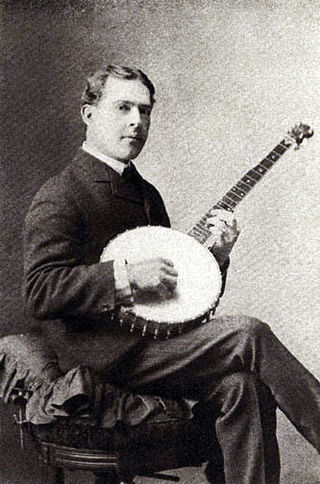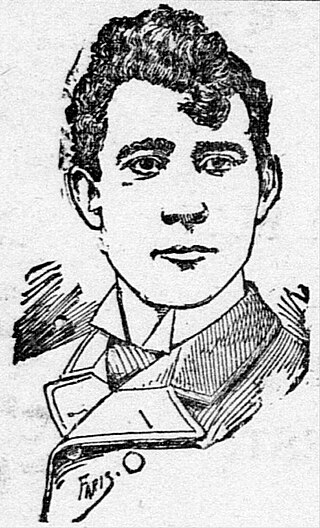
Phonograph cylinders are the earliest commercial medium for recording and reproducing sound. Commonly known simply as "records" in their heyday, a name which has been passed on to their disc-shaped successor, these hollow cylindrical objects have an audio recording engraved on the outside surface which can be reproduced when they are played on a mechanical cylinder phonograph. The first cylinders were wrapped with tin foil but the improved version made of wax was created a decade later, after which they were commercialized. In the 1910s, the competing disc record system triumphed in the marketplace to become the dominant commercial audio medium.
This is a list of notable events in music that took place in the year 1909.
This is a list of notable events in music that took place in the year 1901.
Events in the year 1897 in music.
Events in the year 1899 in music.
Events in the year 1898 in music.
Events in the year 1896 in music.
Events in the year 1895 in music.
Events in the year 1894 in music.
Events in the year 1891 in music.
Events in the year 1892 in music.

Berliner Gramophone – its discs identified with an etched-in "E. Berliner's Gramophone" as the logo – was the first disc record label in the world. Its records were played on Emile Berliner's invention, the Gramophone, which competed with the wax cylinder–playing phonographs that were more common in the 1890s and could record.
Events in the year 1889 in music.

George J. Gaskin was a Northern Irish-born American recording artist, being one of the most popular singers in the United States during the 1890s.

Leonard Garfield Spencer was an American singer, composer, booking agent and vaudeville star who was considered one of the most popular recording artists in the United States from the 1890s to the 1910s.

Sylvester Louis "Vess" Ossman was a leading five-string banjoist and popular recording artist of the early 20th century.

Fred Van Eps was an American banjoist and banjo maker. The "Van Eps Recording Banjo" was a well-known model until 1930. He was the father of jazz guitarist George Van Eps.

Issler's Orchestra was an early recording ensemble, and perhaps the first popular band. The group formed in the fall of 1889 at the Edison Laboratory Because the purpose of the group was only to make recordings, it had only four or five performers, a form that would come to be known as a "parlor orchestra". Personnel and instrumentation varied in the first year, but most sessions included Edward Issler on piano, George Schweinfest on flute and D.B. Dana on cornet. Clarinetist William Tuson and xylophonist Charles P. Lowe would also become core members in time.

George W. Graham was an American monologist, patent medicine salesman, and pioneer recording artist.








